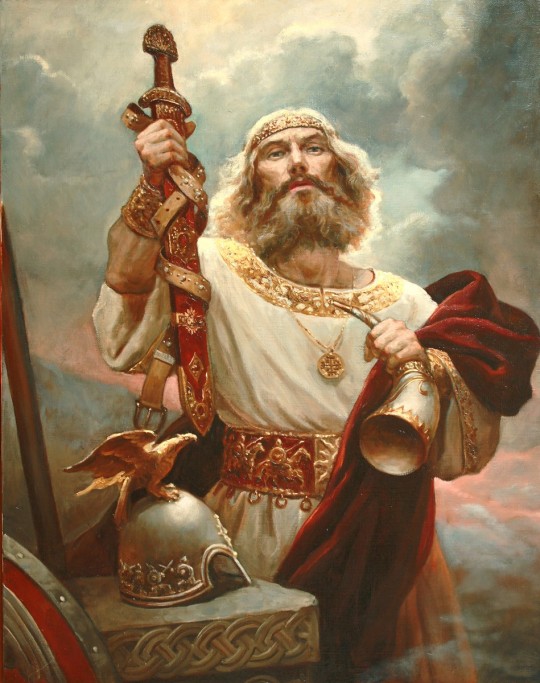#sventovit
Note
Hi, Zarya! Hope your day and health is all well, and apologies if this is a question you've answered already. I was curious though, are there any slavic deities in particular that had aspects of them tied to sexuality, or love? Or if any had a history of being worshipped or associated with/for such things? Sorry if these concepts are too broad to ask about, as I know information about these things can be scarce, but perhaps you know anything about this! Or parts of slavic pagan practices regarding sexuality, love etc like kupala would be interesting to hear you talk more about! Thanks!
Hello!
I have answered a similar question already, although I mostly spoke about female divinities so this is my chance to expand the list with some male gods:
Yarilo/Yarovit
Pretty obvious, he’s a fertility god, definitely associated with sexuality:
„Yarilo wandered all over the world / Rye grew high in the fields, he gave women children / And where he set his foot/ There a stack of rye / Where he’s in the grain/ There the stalks grow tall” *
* A folk song, found in Mitologia Słowian by Aleksander Gieysztor, translated into english by me.
At the same time nothing stands in the way of associating him with love especially if you agree with the hypothesis that Kupala rites represent the time of his wedding (hieros gamos) with Mara, the sacred union of fire and water that allows all things to live and grow.
Veles
Another deity with a fertility aspect, that you can associate with your sexuality. There exists a theory, put forward by Ivanov and Toporov, that he seduced Perun’s wife Mokosh, and therefore the role that Mokosh plays in the mythology is that of the punished wife of supreme thunder god, penalized for her infidelity by being expelled from heaven and sent to earth, the idea stemming from the fact that in moscovian slang „mokosia” means „a woman of easy virtue”**.
** From Religia Słowian by Andrzej Szyjewski.
Because of that particular theory as well as Veles’s general sphere of influence I think you could also see him as someone associated with love that is viewed as transgressive in some way. That’s just my modern interpretation of him though.
Perun
A deity associated with fertility and war. The guy that makes the rain fall. There’s a metaphor for you there, if you want to take it.
Also seems like a family man. Slavists tend to assign him a wife and some children relatively often.
Sventovit
A deity associated with fertility and war. His name denotes him as the posessor of sacred, creative powers. We don’t know for certain if he was associated with sexuality but seeing what his role seems to have been I’m gonna vote „yeah, probably”.
Have a good day!
14 notes
·
View notes
Text
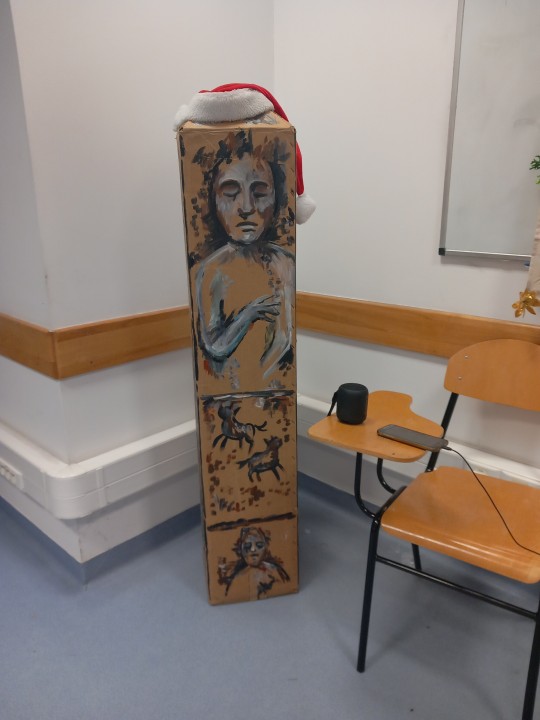

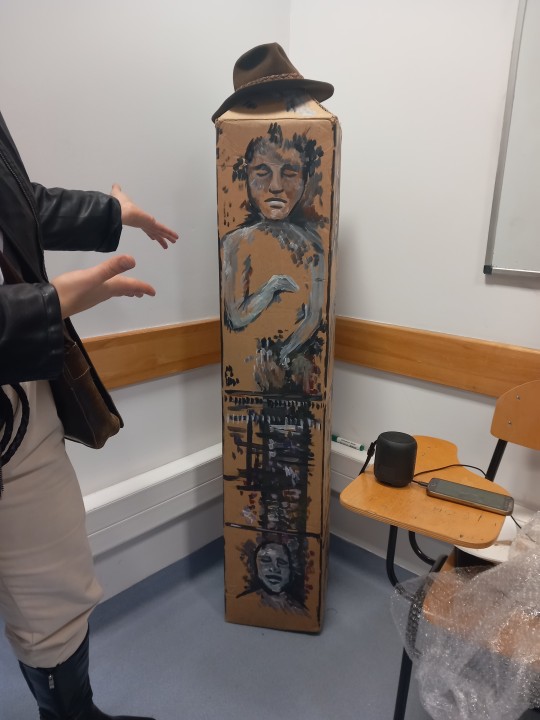
there was a very cool cardboard “replica” of the early slavic Światowid idol from Zbrucz (y)
8 notes
·
View notes
Text
Some addenda.
The 'demonisation' of Perun?
I'm unsure, but not entirely disheartened, about my identification of Perun's transformation into Ruyevit among the Polabians as a process of demonisation. I was guided primarily by a single source mentioning the existence of tension between the 'public' cult of Svątovit and the 'private' cult of Ruyevit; nothing about the latter's cult appears to had been private, certainly not in his cult centre at Charenza/Korenica.
However, note the following passage from the 13th century Knýtlinga saga, which describes the appearance of a god called Tjarnaglofi—that is, Chernabog—worshipped in Asund, near what is today Sellin on Rügen: “[H]e was their god of victory, and he went with them into battle. He had a silver moustache.” I've speculated before Chernabog, rather than being the name of a single deity, was simply a common epithet for deities considered malefic; the mention of the god leading his worshippers to battle and him possessing a silver moustache (compare Perun's golden moustache among the Rus') leads me to believe the Chernabog of Asund is, in fact, Ruyevit, and by extension Perun. Not a very pleasant title for a god! This doesn't necessarily mean the god was reviled, per se; but it does point, I think, to a shift in the understanding of warfare among the Rani, and by extension the divine patron of war.
So, how did Perun transition into Ruyevit? I'm still not sure! But it evidently involved novel emphasis on a punitive relationship with sexual misconduct, and the slow displacement of his association with thunder and fertility-bringing rain. I think this involved primarily the restriction of his cult to soldiers through the loss of his secondary association with fertility. Also, I've taken Svąntovit's banners to imply the loss of Perun's aspect of the patron of state-sanctioned violence—I think this is more debatable than I made it seem. I think a more important question is how did Veles, whom I still assume to be the same as Svątovit, gain an association with warfare; I'll once again turn to Saxo, who says the banners consecrated to Svątovit gave those who wielded them the ability to “plunder cities, destroy temples or houses without suffering consequences, and to execute judgments”. In other words, the banners do not so much give 'legitimise' war as much as they give the wielders the ability to execute their will. I will, quite tentatively, connect this with Veles' function as god of oaths—to wave the banner of Svątovit is to decide who lives and who dies... in possible parallel to Óðinn as the chooser of the slain, whom I've already identified with Veles.
Ruyevit ≠ Yarovit?
“Yarovit” is explicitly identified as the god of war by one monk Ebo in his 1151 hagiography of Saint Otto of Bamberg; in Hobolin on the Polabian mainland, one of the god's primary cult centers, his idol holds a golden shield that must not be touched or carried out of the shrine except in wartime. Ebo's identification of Yarovit as the Slavic Mars and the apparent semantic similarity of his name to that of Ruyevit convinced me the two are probably reflexes of the same deity. However, Roman Zaroff, a Slavicist I'm rather fond of, identified Yarovit with Svątevit in the article The Origins of Sventovit of Rügen (2015), based more-or-less on a passage in monk Herbord's hagiography, contamporaneous with Ebo's, that mentions a (fabricated) incident in which a priest attempts to intimidate Saint Otto into worshipping Yarovit by masquerading as the god, and reciting a short prayer that calls upon Yarovit's powers over the earth and vegetation.
I disagree with Zaroff on Yarovit being the mainland Polabian equivalent to Svątevit; however, his emphasis on the nature of Yarovit as a god of fecundity has made me re-examine some of my prior assumptions. For one, the supposed connection between Yarovit's name and Ruyevit's is not actually that strong: the former derives from *jarö, “ferocious; strong (of heat)”, whence Serbo-Croatian jar, “intense swelter; springtime” and Polish jary, “strong; maturing in spring (of vegetation)”; the latter from *řuti, “to roar”, expanded in some Slavic languages to refer to the sound of animal rutting. The connotation with rutting does not seem to have been present in proto-Slavic; most of the word's descendants simply mean something like “to yell”. Moreover, I think the association of swallow-nests on Ruyevit's idol with springtime (a definite attribute of Yarovit) is unfounded—refer back to my post on Perun, and the Polish superstition regarding swallow-nests protecting houses from lightning (on a second reading, I'd also like to note that Saxo's description of Ruyevit never once mentions an association with spring). There's also the fact the main festival dedicated to Yarovit took place during the beginning of the sowing season, in early April (Szyjewski, A., 2003, p. 118)—a far cry from the Rus' worshipping Perun in early August, and on the winter solstice.
So, Yarovit is probably the mainland Polabian reflex of a third deity, one associated with swelter and springtime, terrestrial fecundity, and perhaps the Sun; if monk Herbord is to believed, the Polabians held Yarovit to “cover the meadows with grass and the forests with leaves, raise crops in fields, (and) give fertility to cattle”. Zaroff speculates, with reservations, the so-called “Yarilo” to be the Eastern Slavic equivalent of Yarovit—instead, I'd like to tentatively propose Dažbog, whose name translates to “abundance-giver”, identified with Helios in the (unreliable) 15th century Hypatian Codex. As for his martial attributes, perhaps Zaroff is right in calling them a later development within Yarovit's cult, one that does not predate the initial settlement of the Slavs around the Elbe river in the 6th century. A third god! Exciting!
3 notes
·
View notes
Text
"Thus, for example, many elements of religious ideas and ritual tied Mediaeval Slavs not only to proto-Slavic tribes neighbouring Scythia, but to the Scythians themselves. The most glaring example of the similarities between Scythian and Slavic beliefs is the depiction of a four-faced Slavic deity found in 1848 in the Zbruch river*, on the stone body of which were carved some purely Scythian attributes: a horse, a bovine horn, a sword. According to Saxo Grammaticus, an XII century author, a horse, a drinking horn, and a sword were the attributes of a god of the Baltic Slavs, Sviatovit**. The same images exactly are present on the stone babas of the Scythian period found within the boundaries of Eastern Scythia.
In the study of Scythian and Dacian religious art motifs, amongst other things, a frequently encountered image is that of a female deity flanked by two horsemen. V.A. Gorodtsov has shown that this composition has been preserved in Russian folk art into modernity. The same or different Scythian goddess in a characteristic headdress was commonly found in Rus of XI-XII centuries in the form of clay figurines, and, in a less distinct form, is found in folk clay toys to this day." - East Slavic Tribes, P. Tretiakov, 1953
Translator's notes:
*Though the commonly accepted narrative is that the Zbruch idol is a genuine Mediaeval creation, there is a theory that it might be a fruit of XIX century Romantic creativity of a local nobleman, Tymon Zaborowski.
**It is likely that the more proper name of this deity is Sventovit
[Thank your translator or see Patreon for more Slavic discussion]
15 notes
·
View notes
Text
i know like. three letters of the cyrillic alphabet and it’s not helping but I needed inspo for worldbuilding soooooo i’ve been taking notes on elympion names.
(consider this an unauthorised follow up to yume’s post on place names)
Given that Kresnik, Rugievit, Leshy, and Domovoy (a one-off Elympion from Leia’s Before Episode story) all point pretty clearly to Slavic mythos, I needed names for OCs that fit that theming and came to the following conclusions on canon names
Duval/Dvor might have been meant to refer to Dvorovoi
Marta might refer to Baba Marta? (I know it’s マータ and not マルタ but they did already name Marta from DotNW マルタ so it was probably so they didn’t overlap?)
Svent very likely refers to Sventovit (“vit” being a suffix for “lord” apparently, which is probably why Rugievit is like that)
The possible roots for Bakur/バクー (1, 2, 3 which is named after 4) just don’t fit the theme of Slavic mythos so. Completely random guessing here. Maybe it’s a loose adaptation of Bauk? (or maybe it really is meant to refer to the city, though I still find it weird that it’s the only odd one out of literally EVERY surnamed Elympion character)
Not as relevant to Elympios technically but Zumay/Zmey of the Six Houses is probably also a reference
2 notes
·
View notes
Photo

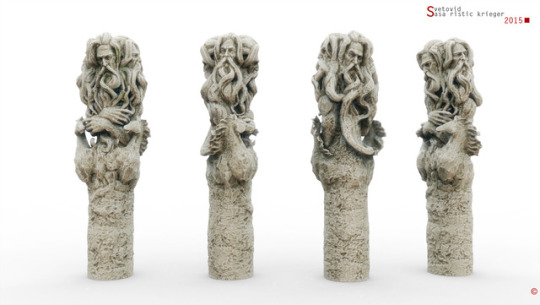
We mgle
Świętowit/Svetovid/Sventovit.
Autor modelu 3D/3D model create by Sasha Krieger Ristich:
https://kriegerman.deviantart.com
Na organach Anna von Hausswolff - Deathbed Live at Orgelkraft Festival:
https://youtu.be/dW2_ZMLyK_o
#świętowit#svetovid#sventovit#bóg słowiański#slavic god#slavic gods#slavic mythology#mitologia słowiańska#jezioro#lake#photoshop
1 note
·
View note
Photo

#Sventovit thenorsewayshop.etsy.com https://www.instagram.com/p/Bs2lfu3HflJ/?utm_source=ig_tumblr_share&igshid=hzo3rqr8q0kx
0 notes
Photo

Svetovid statue in Gubin
Wooden Svetovid statue in Gubin, Poland. Svetovid, also written as Svantovit or Sventovit, is a Slavic god of war, fertility, and abundance.
Read more at: https://paganplaces.com/places/svetovid-statue-in-gubin/
9 notes
·
View notes
Photo
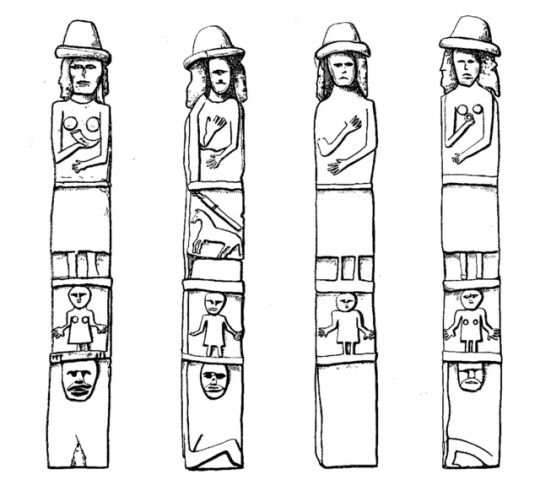

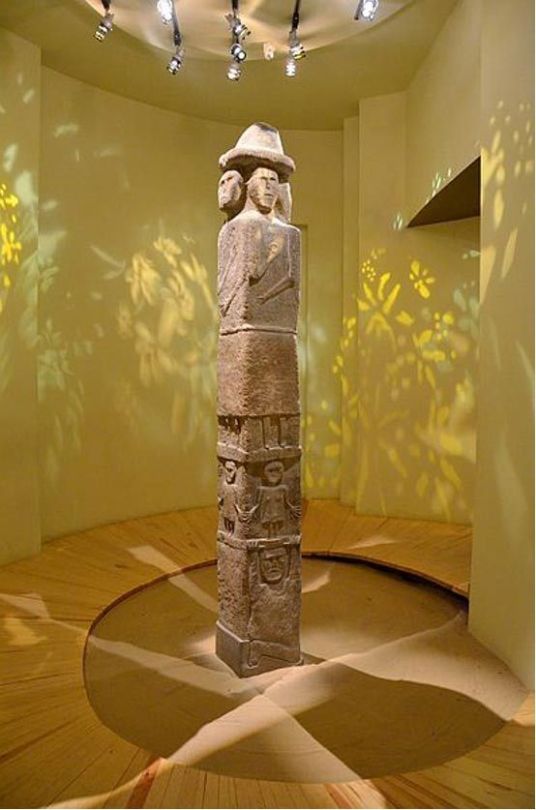
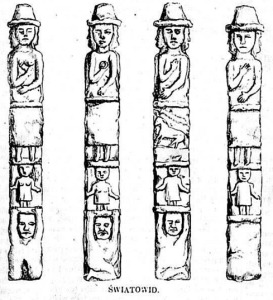
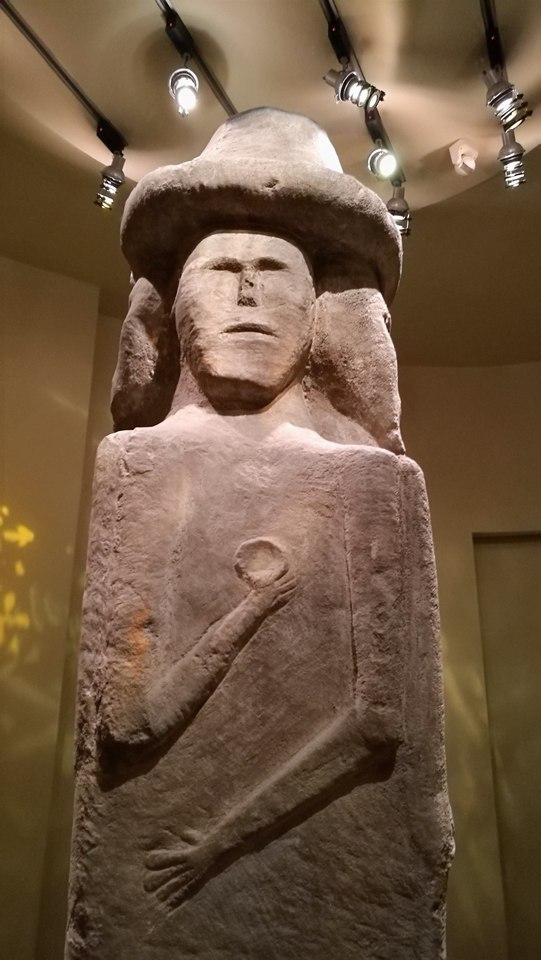

Światowid (Svetovid) is a colloquial name of a 2.57m 9th-century stone statue, found in 1948 in a river Zbrucz, in Ukraine. The statue is now kept in the Archeological Museum of Kraków in Poland and is one of the few monuments of pre-Christian Slavic beliefs. Its name was given by a XIX century Polish historian (Joachim Lelewel), who when evaluating the statue wrongly associated it with Świętowit (Sventovit) - the chief god of the tribes living on the river Elbe in the Eastern Europe. Its original name written in Latin - Svantevit, Lelewel translated to Svetovid meaning ‘looking to the 4 sides of the world’.
Each side of the statue comprises of reliefs positioned in 3 horizontal tiers. All of the figures are connected at the top by a shared hat.
Side A - character holding a horn (top), female character (middle)
Side B - character holding what seems like a ring or epaulet (top), female character (middle)
Side C - male character sat on a horse, holding a sabre (top), male character (middle)
Side D - male character with no attributes (top), male character (middle)
In the bottom tier of the statue, there is a recurring character with his arms reaching to the top, missing only from side D, on which there is only a small imagery of a circle. It is a popular belief that the three tiers of bas-relief represent the three levels of the world, from the bottom underworld, to the middle mortal world and the uppermost, largest, world of heavenly gods.
Sound Sculpture idea derived from pagan mythology.
2 notes
·
View notes
Text
"It is peculiar to this people to seek omens and monitions from horses. Kept at the public expense, in these same woods and groves, are white horses, pure from the taint of earthly labour; these are yoked to a sacred car, and accompanied by the priest and the king, or chief of the tribe, who note their neighings and snortings. No species of augury is more trusted, not only by the people and by the nobility, but also by the priests, who regard themselves as the ministers of the gods, and the horses as acquainted with their will." - Germany and Its Tribes. Complete Works of Tacitus.
"In addition to this, it had in its possession its own private horse, which was white, and whose mane and tail hair it was considered a bad omen to cut. Only one priest was allowed to feed it and ride it, so that the use of the divine animal was not seen as less valuable by being more frequent." - Saxo Grammaticus on the worship of Sventovit, Gesta Danorum
8 notes
·
View notes
Photo

“Sventovit” (1971). Sventovit era un dios pagano, adorado en el santuario de Arkona (actual isla de Rügen, Alemania, orillas del Báltico) por pueblos tanto eslavos como bálticos y germanos. Se trataba de un dios de la guerra, la fertilidad, la profecía y la abundancia, también conocido como Beli o Byali, con lo cual podríamos asimilarlo al Apolo griego y romano, al Abelio céltico, al Baldur germánico y al posterior Luzbel y, por tanto, Lucifer, de las tradiciones heréticas del mundo cristiano medieval. El águila de su yelmo, pintada con motas para hacerla pasar por halcón (y quizás escapar así a la censura) es una copia casi exacta de las águilas empleadas en algunas insignias nazis, y lo mismo reza para el águila de su escudo, como vemos debajo de estas líneas. El santuario de Arkona, tradicionalmente defendido por 300 jinetes, fue destruido en 1168 por cristianos daneses al mando del obispo Absalon, quienes “evangelizaron” a los wendos.
1 note
·
View note
Text
Armoroad Enforcer Kujura - Kujura's family of samurai has been loyal to the Princess for generations. He is particularly proud of his unequalled swordsmanship, which has earned him the titles Sventovit and Raging Lion in some circles. No one, including himself, has noticed the Youtou Nihiru sword on his back is affecting his mind, bringing him to the brink of insanity.
#notes to self#i really need to buy the artbooks#he's the kind of character i want to save but probs won't let me#well#kujura
11 notes
·
View notes
Note
I was wondering if you know of any books in English or documentaries (any language) that go into detail on pre-christian Polish customs and religion?
Hello there, and sorry for a late response!
I do know of some books, however didn’t have any occasion to read anything beside a few things available online on that topic in English so far. Such books aren’t that easily available here in Poland, and my main resources are naturally in Polish - here’s a growing list of them (combining various other topics as well) which I’m updating from time to time, with focus on links to books that are available legally in various Polish online libraries.
To be honest, that is a recurring question and I’d really love to prepare a similar list of resources in English eventually - maybe someone reading this has something valuable to recommend? :)
(a bit of general history/background informations right below, so in case you don’t want to read it, just scroll down for a ‘startup list’ of English books and articles that I frequently see are being recommended)
Another detail is the problematic nature of the topic. You might already know that there are basically no original resources about the old-Slavic faith before the arrival of Christianity on the Polish lands. It’s literally impossible to go really deep into detail about the authentic pre-Christian faith from here. We are just still not sure how it looked like, unnless some forgotten chronicle would be discovered.
In a way, we’re among the most enigmatic Slavic countries in this matter. Way too much of the informations were lost on the course of our complicated history.
Theoretically, the closest relatives/neighbours to the old Polish tribes (thinking about the tribe of Polans in particular) were the extinct Polabians and Pomeranians about whom we know much more than about the early Poles. Informations about those tribes were left in medieval German and Danish chronicles. The main canonical ‘trio’ are “Chronica Slavorum”, “Thietmar’s Chronicle” and “Gesta Danorum”, and I highly recommend to check them out for the little bits of authentic paragraphs about the Western Slavic customs and gods (even if some lines might be biased due to the authors being Christian and looking at the Slavs as pagans). I remember seeing English translations of a few interesting chapters online. Meanwhile, the Polish manuscripts we know of were written many centuries after the official introduction of the then-new religion, and the informations written in them are only small mentions, still analyzed nowadays.
On the other hand, there are quite a lot of resources concerning the remnants of old customs and faith within the Polish folklore (18th and 19th-century ethnographers are golden in that matter). I mentioned it already on my blog: many people doesn’t know that the last less or more authentic ‘pagan’ customs/rites were noted on the Polish countryside as late as the early 20th century! A lot of customs of confirmed pre-Christian origins are widely celebrated in Poland also nowadays. Of course, these spheres of knowledge require lots of reading in a wider perspective and with an open mind, where lots of mentions of Christianity appear because these are the customs that were being gradually syncretized to some bigger or smaller extent.
I know that many people are not fond of reading about the folklore and are looking rather for straight-up informations about the Slavic Faith, but I assure you that it is sometimes a valuable read when you know what you’re looking for. Literally, there are rites and traditions where it’s enough to replace the name of the Christian God, the Holy Mary or a Saint with a name of an old-Slavic Deity.
To summarize it shortly, what we know about comes mainly from the knowledge about old rural customs and tales, from bits of informations from manuscripts which were rather late year-wise, and of course from comparative studies of resources about the other Slavic countries.
If you look for informations about the Old Polish Faith, it’s no mistake to turn into resources from other countries as well and to general informations about Rodnovery - everything shares similarities and could be traced to an old common Slavic core (be of course vary of details that are clearly described as coming from other specific countries).
Also, don’t forget about archaeology where some descriptions of old-Polish/Slavic places of worship, symbolical decorations, can be found. These are spread around, and once I started collecting valuable bits on a side blog @west-slavs
Polish folk legends and fairy tales are nice for side-reading too :)
For a start I might put below some titles (books and articles) that I saw being recommended, or stumbled across online. Various approaches, from archaeology to folklore:
Andrzej Buko: The Archaeology of Early Medieval Poland. Discoveries - Hypotheses - Interpretations
Leszek Pawel Słupecki: Slavonic Pagan Sanctuaries
Marija Gimbutas: The Slavs
Kamil Kajkowski: Islands as symbolic centres of the Early Medieval settlement patterns in Middle Pomerania (Northern Poland) [online on sms.zrc-sazu.si - pdf format]
Kamil Kajkowski: The Boar in the symbolic and religious system of Baltic Slavs in the Early Middle Ages [online on sms.zrc-sazu.si - pdf format]
Kamil Kajkowski: Slavic Journeys to the Otherworld. Remarks on the Eschatology of Early Medieval Pomeranians [online on sms.zrc-sazu.si - pdf format]
Kamil Kajkowski, Paweł Szczepanik: The multi-faced so-called miniature idols from the Baltic Sea area [online on sms.zrc-sazu.si - pdf format]
Leszek Paweł Słupecki: The Krakus’ and Wanda’s Burial Mounds of Cracow [online on sms.zrc-sazu.si - pdf format]
Dominika Czop: Structure of the universein the Norse and Slavic beliefs [online on academia.eu]
Roman Zaroff: The Origins of Sventovit of Rügen [online on sms.zrc-sazu.si - pdf format]
Urszula Lehr: The transcendental side of life. Aquatic demons in Polish folklore [online on folklore.ee - pdf format]
Michael Ostling: Between the Devil and the Host. Imagining Witchcraft in Early Modern Poland
Anna Brzozowska-Krajka: Coexistence or Conflict? The Problem of Dual Belief in Polish Folklore [online on journals.ku.edu]
Elwira Grossman: Studies in Language, Literature, and Cultural Mythology in Poland: Investigating the Other (Slavic Studies, V. 7)
Anna Chrypinski: Polish Customs
Anna Czekanowska: Polish Folk Music: Slavonic Heritage - Polish Tradition - Contemporary Trends
Joanne Asala: Polish Folklore and Myth
Sophie Hodorowicz Knab: Polish Traditions, Customs, and Folklore
Sophie Hodorowicz Knab: Polish Herbs, Flowers & Folk Medicine
Włodzimierz Piątkowski, Anita Majchrowska: Health, illness and dying in Polish folk medicine [online on progress.umb.edu.pl - pdf format]
Włodzimierz Piątkowski, Anita Majchrowska: Unconventional therapists and their patients in Polish traditional folk medicine [online on degruyter.com]
Anna Lubecka: Polish ritual year – a reflection of Polish cultural policy [online on folklore.ee - pdf format]
Traditional design of the Lublin region - popular motifs (article prepared by organization Warsztaty Kultury for a project Patterns of Europe, available on the project’s website)
I need to check out my bookmarks and look for more, and will try to prepare a separate list similar to the one with resources in Polish!
If anyone reading this would like to share good books and articles in English or some documentaries focusing specifically on Poland (and also as analysis on the Polabians or Pomeranians) I’d be more than happy to see and collect as many good recommendations as possible :)
175 notes
·
View notes
